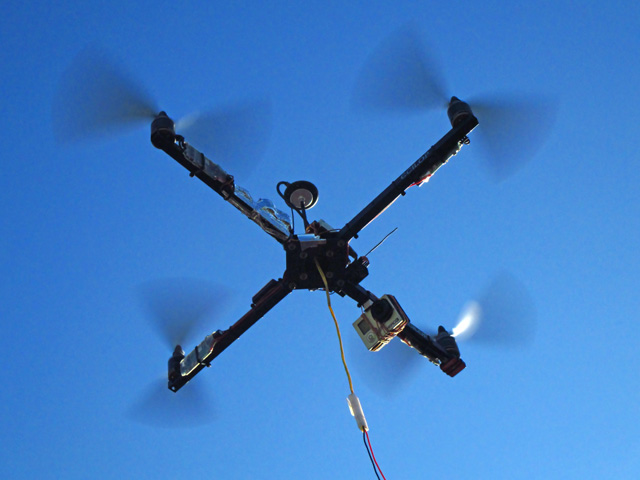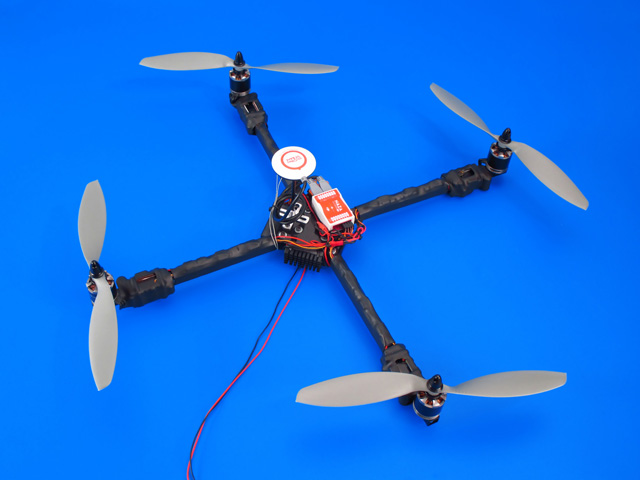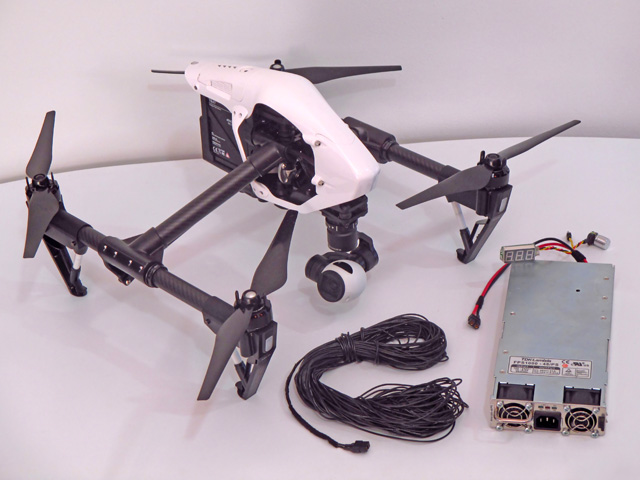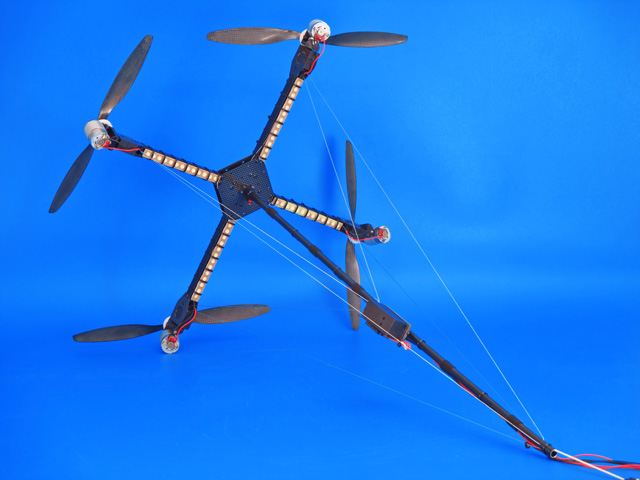|
In August 2015, “My Research” demonstrated a wired power feed system for a helicopter at a record altitude of 1,000 feet (300m). We employ systems with voltages of up to 120V DC for altitudes up to 200 feet (60m). When using a cable up to 1,300 feet (400m) in length, we employ systems with voltages of up to 400V AC. The wired power supply makes it possible for the aircraft to stay in the air for an unlimited amount of time. This makes it possible to significantly expand the number of areas where these aircraft can be used. Examples of situations where such drones can be used include: border and frontline observation posts, video broadcasting of events, to carry mobile radio repeaters to extend the range of communications, to lift up lighting equipment, to act as a construction crane, to provide decorative effects, and to attract attention and publicity.
The aircraft's maneuverability is restricted by the length of the wire, and it can climb the full tension length of the wire. In addition, the aircraft can follow the mobile power station that moves on the ground. This technical solution is scalable and can be adapted to aircraft of different sizes. The weight of this drone is around 800g. A stationary power network or mobile power generator is used. Power consumption is 250W. The length of the wire and maximum altitude of the drone is 1,000 feet or more than 300 meters. Assuming good weather conditions, flight duration is unlimited.
Total of four prototypes that use different technical solutions to supply wired power to the drone have been assembled and tested.
This is a commercially manufactured drone for which a remote charger was created. The battery is charged during flight. It draws a maximum of 20A, and the wire length is 20m. The aircraft remains maneuverable, and it can be used to provide a continuous video stream.
And this is just an early prototype. This unit provides nighttime lighting. Its frame always retains a horizontal orientation. The aircraft's position can be adjusted using tilting rotors. This control mechanism allows the aircraft to land even if two of the four propellers are broken. The aircraft automatically turns in order to stabilize its position when flying using two rotors. A shock absorber that protects the wire from breaking due to sudden gusts of wind is located inside the frame of the aircraft.
|









